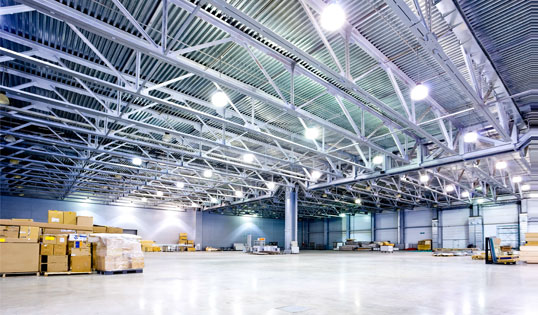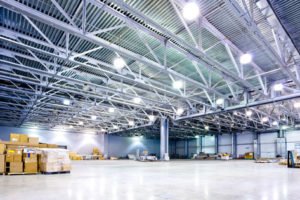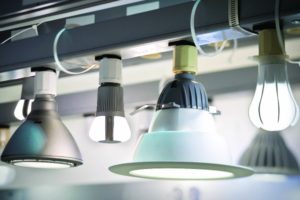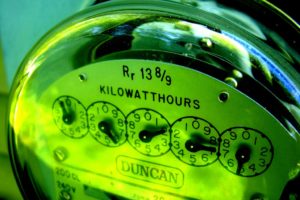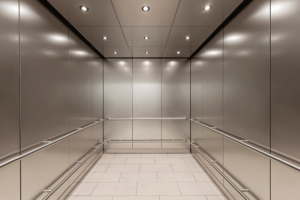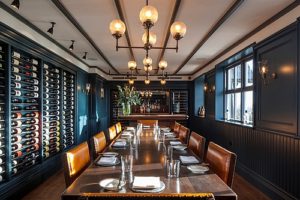MOST RECENT
Best Practices for Retrofitting Warehouse Lighting
1/3/2019
Wow, that is a mouthful of a title!
Let’s break this down to explore what this means, and what the best practices are. When you’re done reading this blog post, you’ll be on your way with a clear understanding of how to go about replacing your warehouse lighting with the best fitting LEDs.
Step One – Understanding Your Warehouse Environment
This is not a one size fits all approach and anyone who tries to sell you a one size fits all LED, is doing you a disservice. It is important for any salesperson to understand the context of your environment first, to help you choose the best LED replacements.
What goes on in your warehouse? Is it solely used for storing inventory or do you have employees working on detail oriented tasks? If it is being used as a storage space, then you want to make sure you have appropriate light for pulling inventory. Too often, aisles and corners are left dim and dark, and this can create an unsafe environment for your employees. In this type Latest
Posts
Posts
Most
Popular
Popular
What is Retrofit Lighting?
4/26/2018
Retrofit Lighting
In laymen’s terms, retrofit lighting is simply upgrading your existing lighting to a more efficient alternative. Although, my guess is that you are looking for a more detailed explanation than that, yes? It is the process of taking your existing lighting and replacing it with a better quality and more energy efficient option. It can apply to any kind of light bulb, or any kind of application. Albeit, residential, commercial, hospitality, industrial, warehouse, small, or big, interior and exterior, the bottom line is that where there is a light bulb, there is a way.
Of course, some retrofitting is easier than others. Nowadays, many styles of LEDs are common place, which makes upgrading affordable and relatively easy. There are, however, still some kinds of bulbs that LEDs still are not quite equipped to replace. Let’s look at a few examples of where retrofitting works and what it looks like.
Resid How To Improve Your Business’ Energy Efficiency With LED Lighting
2/2/2018
There are only a few reasons why a business would want to be more energy efficient.
The first one that comes to mind is because you are conscious of your carbon footprint and want to do your share of preserving our delicate Mother Earth. By being more energy efficient, you are helping to preserve our natural resources and minimize greenhouse gas emissions. While I would like to think that our intention to be more energy efficient is only because we care and because we want to do what’s best for the Earth and future generations, I suspect there are other motivating factors.
Such as … SAVING MONEY!!
As the owner of Martek Lighting, I understand that minimizing expenses, whenever possible, is critical, regardless of what kind of business it is. There is not a single business out there that doesn’t consume some kind of light energy. We all need light, right?
Fluorescent vs. LED Lighting in the Workplace
The Best Way To Light An Elevator Cab With LED
12/13/2017
I recently visited my grandmother-in-law in Florida; it was a lovely warm afternoon and we decided to go to lunch. We went to a restaurant on the water front and I was pleasantly surprised to learn they had an elevator for us to use, instead of having Peg climb the stairs to the 2nd floor. As we entered, I gazed up and noticed that 40% of their elevator ceiling lights were out! Maybe this was their way of saving energy and keeping the elevator cab cooler?
These days, LEDs make lighting an elevator cab an easy thing to do. The majority of ceiling lights are one of two bulbs: either a GBF or a 1383. They are both 20 watts and used in 12 Volt systems. Some cabs have 6, others have 9, and like this one I was in, it had 18 lights (albeit 7 were not working). In any case, that is 20 watts per bulb that are almost always lit 24 hours a day. That kind of energy consumption adds up quickly. Moreover, the heat these bulbs produce can make an already crammed The Benefits of LED Lighting in a Warehouse
10/30/2017
The title of this blog should be, “Why wouldn’t you use LED lighting in a warehouse?” I literally cannot think of one reason NOT to use LED lighting in a warehouse setting, unless you don't want to make your life easier or don't want to save energy, or don't want to spend less money. Let me explain.
Benefit #1: Longer life means less relamping
With a longer lasting LED, you won’t have to even think about changing your LED for years. Not only are LEDs more convenient because of their long life, but you are also saving money and time by eliminating the costs involved on changing the bulbs.
Whether your warehouse is big or small, most likely the ceiling lights are not easily accessible, sometimes up to 40' high. In addition, HID (high intensity discharge) bulbs require regular re-lamping and ballast replacements. This process is both LED Lighting for Bars and Restaurants
9/13/2017
For anyone working in the bar or restaurant industry, there is one thing that’s clear: changing light bulbs should be the last thing on your priority list. The other side of this coin is that health inspections are getting more rigid these days and the requirement to have safety coated bulbs in certain areas is real. There is also the atmosphere that you are trying to achieve, and still more, the constant battle of finding the perfect temperature to keep guests pleased. So, while you may want to ignore the lighting in your space, the truth is that it plays a significant role for a variety of reasons. It’s because of all of this, that LEDs should be the way to go! And yes, there are now LEDs that will allow you to keep the integrity of your specific aesthetic, albeit modern to farm house, or anywhere in between.
Ok, so there is the issue of having to change light bulbs, or worrying about customer’s noticing that a bulb is out. Having one or more light bulbs out can send 

